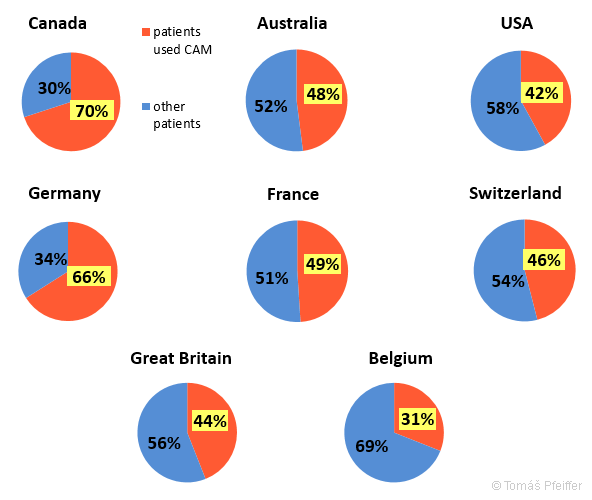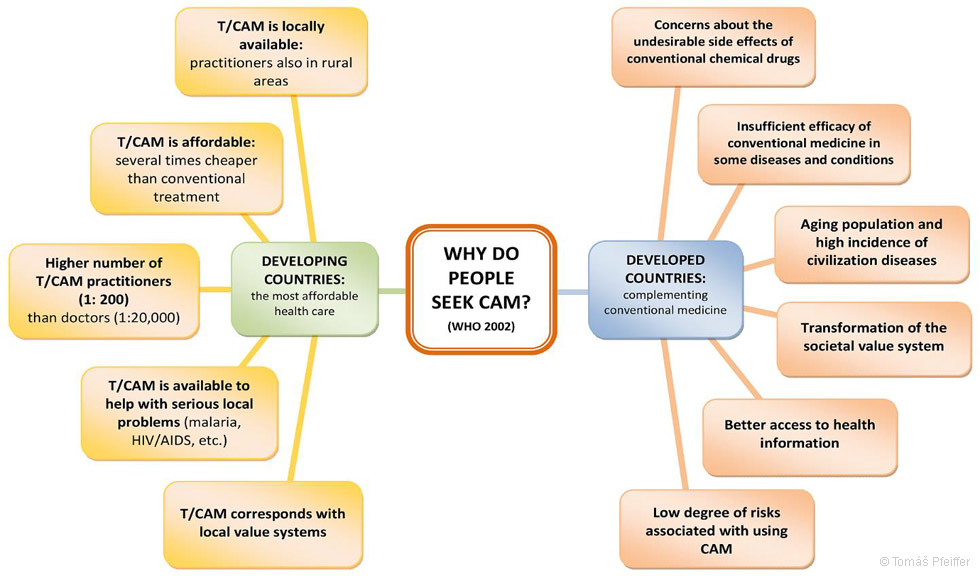Number of developed country citizens using CAM therapy

Figure 19 – Number of developed country citizens using CAM therapy as a complement
to conventional treatment (surveys from 1997–2010). Author of the graphs – KoS.
The reasons why people in developed countries are looking for alternative options vary from country to country, but the most common reasons are: (166)
- growing dissatisfaction with existing health care services,
- interest in the holistic approach to the patient,
- focus on a healthy lifestyle and emphasis on disease prevention,
- the need to improve the quality of life in cases of incurable diseases,
- failure of conventional treatment (regarding a specific problem),
- concerns about the undesirable side effects of conventional chemical drugs,
- interest in a less intrusive CAM therapy,
- personal or cultural preferences.
There is a growing tendency among citizens of developed countries to take responsibility for their own health. (167) This tendency is also supported by the increasing availability of information and growing awareness of available treatment options.
At the same time, chronic illnesses, such as heart disease, cancer, diabetes and mental disorders, are increasing due to demographic developments. In some cases, conventional medicine fails to offer the patient a satisfactory solution – sometimes the treatment is not effective enough or comes only at the cost of serious side effects. (168)

Figure 20 – Overview of reasons why patients across the world are looking for traditional/complementary and alternative medicine (T/CAM or CAM).
Author of the schema – KoS.
Source: WHO. WHO Traditional Medicine Strategy 2002–2005 [online].
http://www.wpro.who.int/health_technology/book_who_traditional_medicine_strategy_2002_2005.pdf
http://www.wpro.who.int/health_technology/book_who_traditional_medicine_strategy_2002_2005.pdf
(166) WHO. WHO Traditional Medicine Strategy 2014–2023 [online]. 2013, ISBN 978-92-4-150609-0, p. 27 [cit. 2018-04-01]. Available from:
http://www.who.int/medicines/publications/traditional/trm_strategy14_23/en/
http://www.who.int/medicines/publications/traditional/trm_strategy14_23/en/



